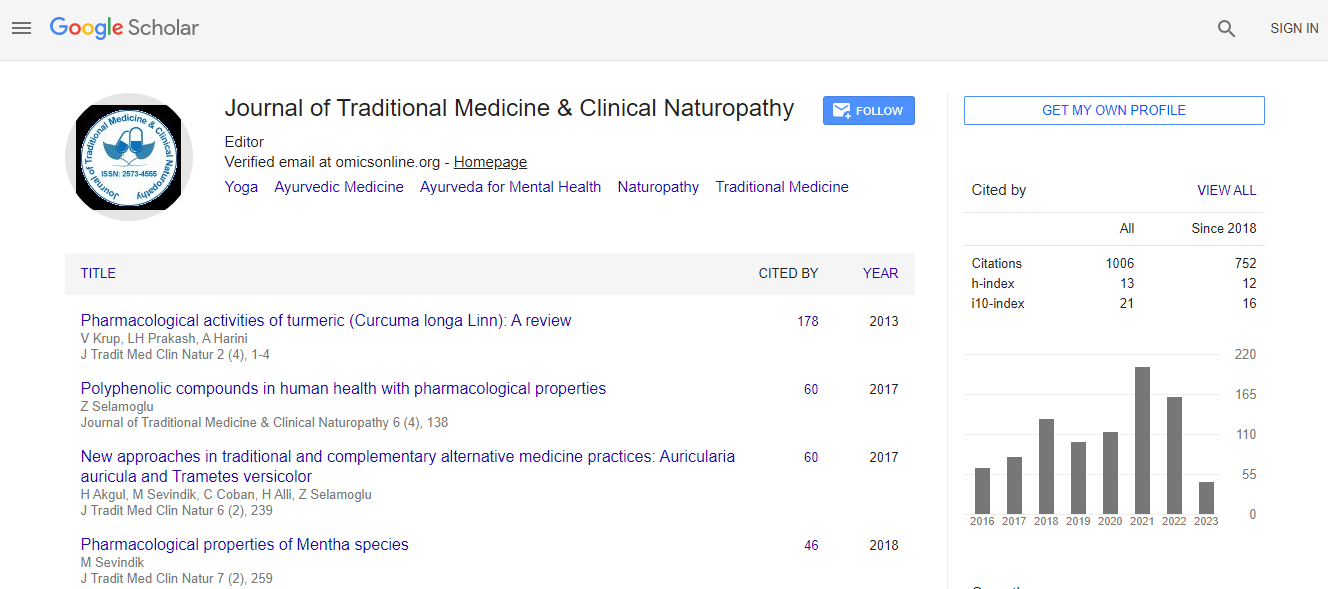Our Group organises 3000+ Global Conferenceseries Events every year across USA, Europe & Asia with support from 1000 more scientific Societies and Publishes 700+ Open Access Journals which contains over 50000 eminent personalities, reputed scientists as editorial board members.
Open Access Journals gaining more Readers and Citations
700 Journals and 15,000,000 Readers Each Journal is getting 25,000+ Readers
Google Scholar citation report
Citations : 1004
Journal of Traditional Medicine & Clinical Naturopathy peer review process verified at publons
Indexed In
- CAS Source Index (CASSI)
- Google Scholar
- Sherpa Romeo
- Open J Gate
- Genamics JournalSeek
- RefSeek
- Directory of Research Journal Indexing (DRJI)
- Hamdard University
- EBSCO A-Z
- Publons
- Geneva Foundation for Medical Education and Research
- Euro Pub
- ICMJE
Useful Links
Recommended Journals
Related Subjects
Share This Page
Are cold and heat patterns associated with resting energy expenditure and body composition?
6th International Conference and Exhibition on Traditional & Alternative Medicine
Sujeong Mun, Kihyun Park, Kwang-Ho Bae, Dae-il Park, Siwoo Lee and Jong-hyang Yoo
Korea Institute of Oriental Medicine, Republic of Korea
Posters & Accepted Abstracts: J Tradi Med Clin Natur
Abstract
Evaluating cold and heat patterns is a basic pattern identification component in traditional East Asian medicine. This study aims to investigate the association of cold and heat pattern with resting energy expenditure (REE) and body composition. The cold and heat pattern of 130 adults were evaluated with a self-administered questionnaire. REE and body composition were analyzed by spearman��?s correlation tests and regression analysis for their association with the cold and heat pattern. The cold pattern score (CPS) was higher in women and heat pattern score (HPS) was higher in men. REE showed moderate correlation with the CPS (rho=-0.469, p<0.001) and HPS (rho=0.418, p<0.001). Fat free mass (FFM), body cell mass, the ratio of extracellular water (ECW) to intracellular water (ICW), and the proportion of ICW and ECW in FFM were moderately correlated with the CPS and weakly correlated with the HPS. A cold or heat preference and a cold or hot body sensation showed stronger correlations with metabolic measures than did other parameters in the questionnaire. The CPS and HPS explained 25.5% of the REE variance, and the HPS was independently associated with REE after adjusting for age, gender and FFM. Cold and heat patterns appear to be related to REE, and in particular, heat patterns were independently associated with REE. Future studies are needed to investigate the biological basis and diagnostic value of these findings.Biography
Sujeong Mun is a Senior Researcher at Korea Institute of Oriental Medicine. Her recent research interest is to explore the association of patterns in traditional East Asian Medicine with biological parameters.
Email: azrain@kiom.re.kr

 Spanish
Spanish  Chinese
Chinese  Russian
Russian  German
German  French
French  Japanese
Japanese  Portuguese
Portuguese  Hindi
Hindi 
